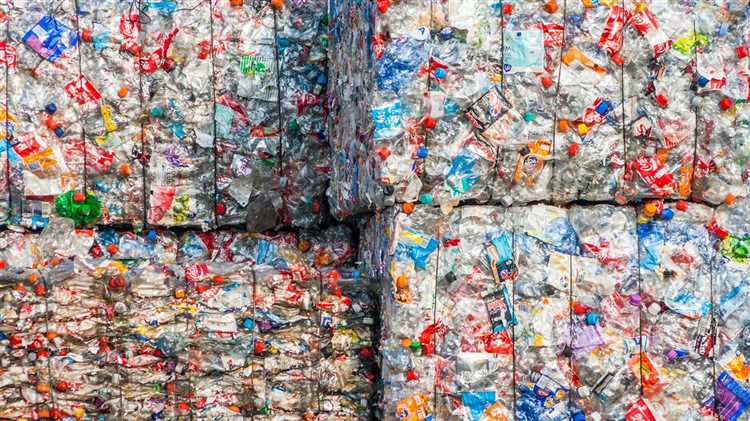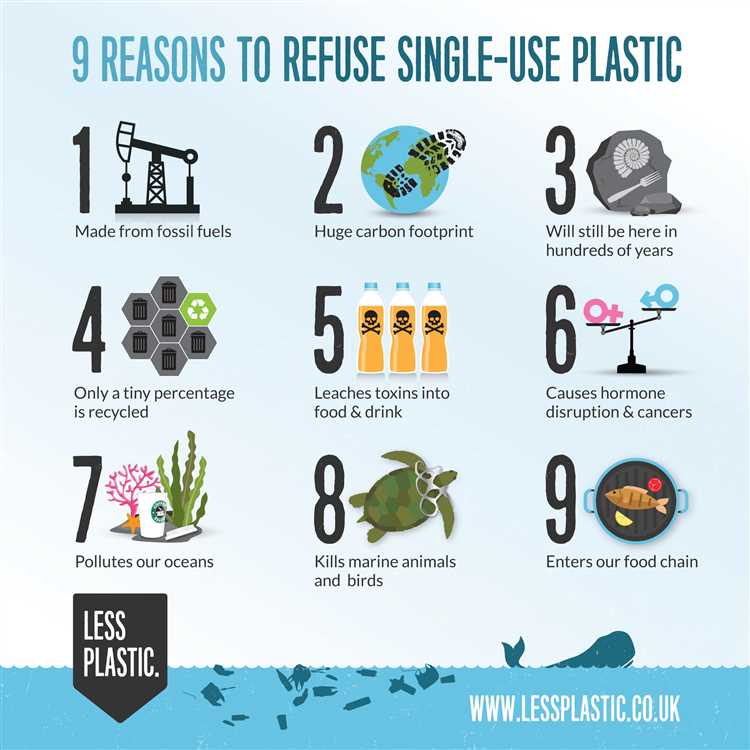
In recent years, there has been a growing global movement to reduce plastic consumption. Many individuals, organizations, and governments are taking steps to limit their use of plastic products in an effort to combat the environmental and health impacts associated with plastic pollution. However, despite these efforts, giving up plastic entirely remains a significant challenge.
One of the reasons we can’t give up plastic is its convenience and versatility. Plastic is lightweight, durable, and can be molded into a wide variety of shapes and sizes, making it ideal for packaging, transportation, and storage of goods. It is also a cost-effective material, which makes it difficult for businesses to completely eliminate plastic from their operations.
Another challenge in reducing plastic consumption is the lack of viable alternatives. While there are some alternatives to plastic available, such as glass, metal, and paper, they often come with their own set of drawbacks. Glass and metal, for example, are heavier and more fragile, which can increase transportation costs and the risk of breakage. Paper, on the other hand, may require more resources to produce and can be less durable than plastic.
Additionally, plastic has become deeply ingrained in our daily lives and industries. It is used in countless products, from clothing and electronics to medical devices and construction materials. Finding suitable replacements for all of these plastic items is a complex task that requires significant research, development, and investment.
While reducing plastic consumption is an important goal, it is essential to recognize the challenges and limitations that come with it. By understanding these obstacles, we can develop more realistic strategies and solutions to effectively reduce our reliance on plastic and move towards a more sustainable future.
- Challenges of Reducing Plastic Consumption
- Limited Alternatives
- Inefficient Waste Management Systems
- Environmental Impact
- Economic Considerations
- Cost of Alternatives
- Industry Dependence
- Job Losses
- Technological Limitations
- Behavioral Change
- Overcoming Behavioral Change Challenges
- Lack of Alternatives
- Government Regulation
- Q&A:
- Why is reducing plastic consumption difficult?
- What are some challenges in finding alternatives to plastic?
- Are there any cultural or societal factors that make it difficult to give up plastic?
- What are some economic challenges in reducing plastic consumption?
- Can technology play a role in reducing plastic consumption?
Challenges of Reducing Plastic Consumption

Despite increasing awareness about the environmental impact of plastic, reducing plastic consumption continues to be a challenge for individuals and societies. There are several factors that contribute to this challenge:
Limited Alternatives
One of the main challenges of reducing plastic consumption is the limited availability of alternatives. While there are some alternatives to plastic, such as paper or glass, they may not always be practical or accessible for everyone. In many cases, plastic is still the most convenient and affordable option, especially for single-use items like packaging or disposable utensils.
Inefficient Waste Management Systems
Another challenge is the inefficient waste management systems in many countries. Even if individuals make the effort to reduce their plastic consumption, there is no guarantee that the plastic waste will be properly managed and recycled. Inadequate recycling facilities and lack of infrastructure for proper waste disposal contribute to the problem, leading to plastic pollution in landfills and oceans.
A lack of awareness and education about recycling and waste management also hinders efforts to reduce plastic consumption. Many people are still unaware of the harmful effects of plastic pollution and the importance of proper waste disposal.
| Challenges | Description |
|---|---|
| Limited Alternatives | The limited availability of practical and affordable alternatives to plastic. |
| Inefficient Waste Management Systems | Inadequate recycling facilities and lack of infrastructure for proper waste disposal. |
| Lack of Awareness and Education | A lack of knowledge about the harmful effects of plastic pollution and proper waste disposal. |
In conclusion, reducing plastic consumption faces several challenges, including limited alternatives, inefficient waste management systems, and lack of awareness and education. Overcoming these challenges will require collective efforts from individuals, governments, and organizations to develop and promote sustainable solutions.
Environmental Impact
Plastic pollution is wreaking havoc on our environment, causing significant harm to our ecosystems and wildlife. The environmental impact of plastic consumption is vast and far-reaching.
One major consequence of plastic use is the significant increase in waste generation. Plastic products and packaging make up a significant portion of municipal solid waste, which often ends up in landfills or incinerators. The decomposition of plastic takes hundreds of years, and during this time, harmful chemicals are released into the soil and water, posing a threat to plants, animals, and humans alike.
The production of plastic also has a profound impact on greenhouse gas emissions. The extraction and refinement of fossil fuels, which are the primary raw materials for plastic production, contribute to the release of carbon dioxide and other greenhouse gases into the atmosphere. Additionally, the manufacturing process itself generates emissions, further exacerbating climate change.
Plastic waste is not only harmful on land but also in our oceans and waterways. Every year, millions of tons of plastic end up in the ocean, posing a serious threat to marine life. Plastic debris can be mistaken for food by marine animals, leading to ingestion and entanglement. This not only harms individual animals but also disrupts entire ecosystems, with potential consequences for the balance of oceanic ecosystems.
Microplastics, tiny particles resulting from the breakdown of larger plastic items, further compound the environmental impact of plastic. These microplastics can be found in oceans, lakes, and rivers, posing a risk to aquatic organisms and potentially entering the food chain. The long-term effects of microplastic ingestion by humans are still uncertain, but research suggests potential health risks.
Addressing the environmental impact of plastic requires significant efforts to reduce its consumption, improve waste management systems, and develop alternatives to single-use plastic products. By recognizing the far-reaching consequences of plastic pollution and taking action, we can work towards a more sustainable future for our planet.
Economic Considerations
While there are many reasons why reducing plastic consumption is important, there are also several economic challenges that make it difficult to completely give up plastic. Here are some economic considerations that complicate the issue:
Cost of Alternatives
One of the main reasons why plastic is still so widely used is its cost-effectiveness. Plastic is a cheap material to produce, making it an attractive option for businesses and consumers. Finding affordable alternatives to plastic can be a challenge, as many eco-friendly materials are more expensive to manufacture and often come with a higher price tag for consumers. Until more cost-effective alternatives are developed, the economic incentive to continue using plastic will remain strong.
Industry Dependence
The plastic industry is a major part of many economies worldwide. From production to packaging, plastic plays a significant role in various sectors, including manufacturing, retail, and agriculture. Transitioning away from plastic would require significant investment and restructuring in these industries, which can be a costly and complex process. Many businesses may be hesitant to make this transition due to the potential economic impact and uncertainty associated with it.
Job Losses

A shift away from plastic could also lead to job losses in the industry. Many people rely on jobs in plastic manufacturing and related sectors for their livelihoods. These workers may face significant challenges in finding alternative employment if their jobs were to disappear. Governments and policymakers need to consider the economic consequences and potential job market implications of reducing plastic consumption to ensure a smooth transition for affected workers.
While reducing plastic consumption is necessary for the health of the planet, it is important to recognize and address these economic considerations. Finding cost-effective alternatives, supporting the transition of plastic-dependent industries, and ensuring job security for affected workers are crucial steps in making sustainable changes towards reducing plastic consumption.
Technological Limitations
While there is a growing worldwide awareness of the environmental impacts of plastic waste, reducing plastic consumption still presents significant technological challenges.
Plastic has become deeply ingrained in our daily lives because of its convenience and versatility. Finding suitable alternatives for certain applications can be difficult due to the material’s unique properties. For example, plastic is lightweight, durable, and has excellent moisture resistance, making it ideal for packaging food and beverages. Finding alternative materials that can match these qualities is a complex task.
The production of plastic also relies heavily on technology. The process of creating plastic involves intricate chemical reactions, high-temperature manufacturing, and precision engineering. Developing new materials and production methods that can rival the cost-effectiveness and efficiency of plastic presents a significant technological hurdle.
Furthermore, many plastic products are designed for specific functionalities that can be hard to replicate with other materials. Items like plastic containers, medical devices, and electronic components require specialized properties such as transparency, strength, and heat resistance. Developing alternative materials with the same capabilities can be challenging and may require significant advancements in materials science and engineering.
Additionally, transitioning to non-plastic alternatives often requires significant changes in infrastructure and supply chains. For example, replacing single-use plastic packaging with biodegradable or compostable alternatives requires facilities that can effectively process and dispose of these materials. Implementing such changes on a large scale can be expensive and time-consuming.
However, despite these technological limitations, researchers and innovators are continually working on finding new solutions. Advances in biodegradable plastics, sustainable packaging, and recycling technologies show promising potential for reducing plastic consumption in the future. It is crucial to support these efforts and invest in research and development to overcome the technological challenges associated with plastic reduction.
Behavioral Change
One of the biggest challenges in reducing plastic consumption is changing ingrained behaviors. Society has become accustomed to the convenience and affordability of plastic, making it difficult to break away from this dependency.
Resistance to change:
Humans are creatures of habit, and breaking old habits can be difficult. Many people are resistant to change, especially if it requires effort or sacrifice. Switching to alternatives like reusable bags or stainless steel water bottles may seem inconvenient compared to the ease of disposable plastic options.
Lack of awareness:
Another barrier to behavioral change is a lack of awareness about the negative impacts of plastic consumption. Many people may not fully understand the environmental consequences or the long-term effects of plastic pollution. Without this knowledge, individuals are less likely to feel motivated to change their behaviors.
Social and cultural norms:
Social and cultural norms also play a significant role in shaping behavior. Plastic consumption is often normalized and even encouraged in many societies. For example, the use of plastic bags may be ingrained in everyday routines, with individuals automatically reaching for them at checkout. Changing these deeply rooted behaviors requires a shift in societal norms and values.
Overcoming Behavioral Change Challenges

Educational campaigns:
Raising awareness through educational campaigns is crucial in promoting behavioral change. These campaigns should not only highlight the negative impacts of plastic consumption but also provide practical alternatives and solutions. By providing information and resources, individuals can better understand the need for change and feel empowered to take action.
Policy changes:
Governments and organizations can also play a role in driving behavioral change by implementing policies that discourage plastic consumption. For example, banning single-use plastic items or implementing taxes on plastic products can incentivize individuals to seek out alternative options.
Individual responsibility:
Changing behaviors ultimately comes down to individual responsibility. While policy changes and educational campaigns can create a supportive environment, individuals must also take personal accountability for their choices. By consciously choosing to reduce plastic consumption and opting for more sustainable alternatives, individuals can make a significant impact in reducing overall plastic waste.
Overcoming the challenges of behavioral change requires a multi-faceted approach, addressing individual habits, societal norms, and policy interventions. By working together, we can begin to break free from our reliance on plastic and create a more sustainable future.
Lack of Alternatives
One of the main reasons why reducing plastic consumption is challenging is the lack of viable alternatives. Plastic is versatile, lightweight, and durable, making it an ideal material for a wide range of applications. Unfortunately, finding suitable substitutes for plastic is not always easy.
Many products that are currently made from plastic, such as packaging materials, disposable cutlery, and single-use containers, do not have readily available alternatives that offer the same level of convenience and affordability. Paper, glass, and metal can be alternatives in some cases, but they often come with their own set of drawbacks, including higher costs and less durability.
Furthermore, the production and distribution of alternative materials can also have negative environmental impacts. For example, the manufacturing process of paper can result in deforestation, while the production of glass requires large amounts of energy. Additionally, metal alternatives may be heavier, increasing transportation emissions.
The lack of alternatives is especially evident in industries and sectors where the use of plastic is deeply ingrained. For instance, in the medical field, plastic is essential for its hygienic properties and ability to withstand sterilization processes. Similarly, in the automotive industry, plastic components are often preferred due to their lightweight nature and cost-effectiveness.
While efforts are being made to develop and promote alternative materials, it will take time for them to become widely available and financially viable. In the meantime, individuals can still make a difference by reducing their plastic usage in other areas and supporting companies that are actively working towards finding sustainable alternatives.
In conclusion, the lack of viable alternatives to plastic presents a significant challenge in reducing plastic consumption. The convenience, affordability, and versatility of plastic make it difficult to replace in many applications. However, with continued efforts to develop sustainable alternatives and individual action, it is possible to overcome this obstacle and create a more plastic-free future.
Government Regulation
The issue of reducing plastic consumption cannot be solved without effective government regulation. Lawmakers play a crucial role in setting policies and regulations that incentivize the reduction of plastic use and promote sustainable alternatives.
One challenge is that there is currently a lack of consistent and comprehensive regulations regarding plastic production and waste management. Some countries have strict regulations in place, while others have limited or non-existent measures. This disparity creates difficulties for businesses and consumers who are trying to make sustainable choices.
Additionally, governments need to invest in infrastructure and waste management systems that can handle the increased demand for recycling and waste reduction. Without proper systems in place, the efficient handling and disposal of plastic waste becomes challenging and costly.
Government regulation should also focus on encouraging businesses to adopt eco-friendly practices and reduce their reliance on plastic. This can be done through tax incentives, subsidies for sustainable packaging alternatives, and penalties for excessive plastic use.
Furthermore, education and awareness campaigns led by government organizations are essential to inform the public about the environmental impact of plastic and encourage behavior change. These campaigns can provide information on alternatives to single-use plastics and the benefits of recycling.
Ultimately, government regulation is necessary to create a level playing field and ensure that businesses and individuals are held accountable for their plastic consumption. By implementing comprehensive and consistent regulations, governments can drive the transition to a plastic-free future.
Q&A:
Why is reducing plastic consumption difficult?
Reducing plastic consumption is difficult because plastic is a versatile and durable material that has become deeply ingrained in our modern society. It is widely used in various industries and products, making it challenging to find viable alternatives.
What are some challenges in finding alternatives to plastic?
Finding alternatives to plastic poses several challenges. One major challenge is ensuring that the alternatives are both environmentally friendly and economically feasible. It requires extensive research and development to create materials that can replicate the functionalities of plastic while being sustainable and cost-effective.
Are there any cultural or societal factors that make it difficult to give up plastic?
Yes, there are cultural and societal factors that make it difficult to give up plastic. For instance, single-use plastic items have become deeply ingrained in our daily lives, and many people rely on their convenience. Additionally, plastic has become associated with status and modernity, further reinforcing its usage.
What are some economic challenges in reducing plastic consumption?
Reducing plastic consumption poses economic challenges for both businesses and consumers. Businesses often rely on plastic packaging due to its low cost and convenience. Switching to alternative packaging materials may require significant investments in machinery and production processes. For consumers, alternative products can be more expensive, making it less accessible for those with lower incomes.
Can technology play a role in reducing plastic consumption?
Yes, technology can play a crucial role in reducing plastic consumption. For instance, advancements in biodegradable materials can provide viable alternatives to plastic. Additionally, technology can aid in improving waste management systems and recycling processes, ensuring that plastic waste is properly handled and recycled.